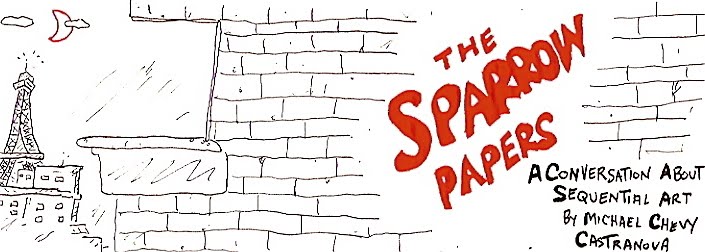
In the beginning, Will Eisner created
The Contract With God, and he proclaimed it good. He called it a “graphic novel.”
Eisner was already famous for The Spirit, and he’d achieved success in both newspaper comic strips and comic books — he’d even created comic-book packages to bundle into newspapers. (See
willeisner.com.) But in 1978, he wrote and drew
The Contract With God, about the residents of a Bronx tenement at the fictional 55 Dropsie Avenue.
In the introduction to a later edition that also includes
A Life Force and
Dropsie Avenue, the rest of the trilogy, the artist recalls how he coined the phrase “graphic novel” in “a futile effort to entice the patronage of a mainstream publisher.” He figured “novel” sounded better than “comic book.” (Eisner also came up with the term sequential art.) The rest is history.
These stories, taken from Eisner’s childhood memories, are occasionally funny and almost universally sad. They relate the Great Depression-era woes of frustrated mothers and wives and cheating husbands, ungrateful children, out-of-work bankers, sinister gangsters, golddiggers, worn-down rabbis, anti-semitic building superintendents, faded divas and alcoholic singers, as well as that of Izzy the cock-a-roach, as they all try to get on and get along. (God figures in many of the tales, too.) Their comings and goings intertwine, sometimes to their benefit, but sometimes not. When it rains, it’s a deluge — water rises above ankle-deep, to the second or third step. Their challenges are heartbreaking.
The characters, for all their real-life troubles, remain drawn in Eisner’s cartoony style: The good looking women are dames, the handsome men are just this side of cads, the bad guys are weasels and the goons are, well, goony. Yet they
are real. Look at the opening picture in the story “Shabbasgoy”: well-dressed Elton Shaftsbury II, who lost everything in the stock market crash, stands in the falling snow near a subway entrance. He’s cold — see his hunched shoulders — and he’s reduced to selling apples, at five cents apiece. The tall spire behind him highlights his isolation; he doesn’t touch the apples or the subway stair post. He is completely alone, and his body language shows us that is exactly how he feels.
I saw Eisner once, in the mid-1980s at a conference for comic strip artists as part of Ohio State University’s
Cartoon Library and Museum. He was asked what advice he would give to those trying to succeed in newspaper comic-strip syndication. His answer essentially was, Ah, forget about syndicates, they’ll just break your heart. Do comic books instead. Then he smiled.
The man was brilliant and he knew his mind. Always, apparently.
 Last Sunday’s New York Times carried a story about Charles T. Gehring, who for 35 years has been translating 17 century court records, letters and other documents from New Netherland (New York) from the original Dutch. Imagine my surprise to come across a reference to George O’Connor’s graphic novel, Journey Into Mohawk Country. (See my post on that book here.)
Last Sunday’s New York Times carried a story about Charles T. Gehring, who for 35 years has been translating 17 century court records, letters and other documents from New Netherland (New York) from the original Dutch. Imagine my surprise to come across a reference to George O’Connor’s graphic novel, Journey Into Mohawk Country. (See my post on that book here.)



























